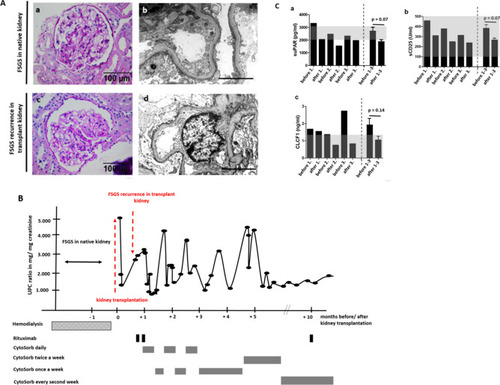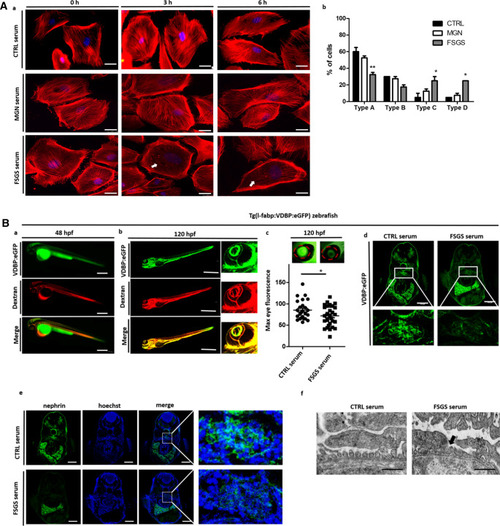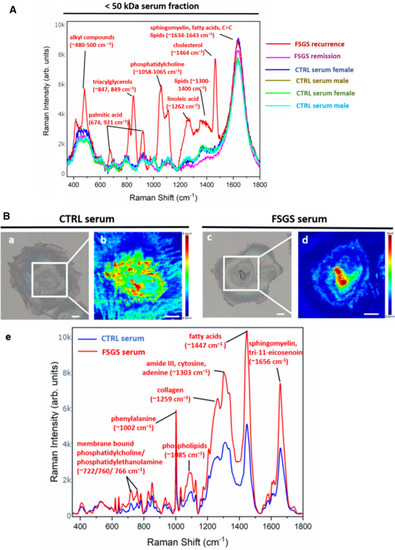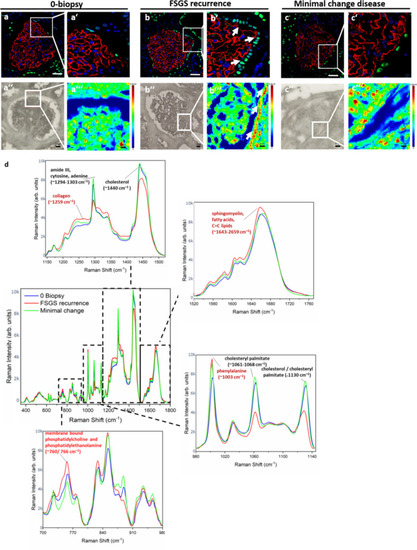- Title
-
Novel diagnostic and therapeutic techniques reveal changed metabolic profiles in recurrent focal segmental glomerulosclerosis
- Authors
- Müller-Deile, J., Sarau, G., Kotb, A.M., Jaremenko, C., Rolle-Kampczyk, U.E., Daniel, C., Kalkhof, S., Christiansen, S.H., Schiffer, M.
- Source
- Full text @ Sci. Rep.
|
CytoSorb apheresis to treat therapy resistant and early recurrent FSGS. ( |
|
Cell culture and zebrafish assay to detect morphological and functional effects of unknown circulating permeability factors in FSGS. ( EXPRESSION / LABELING:
|
|
Raman spectroscopy reveals molecular fingerprint of FSGS serum and changes in podocyte metabolome induced by FSGS serum. ( |
|
Raman spectroscopy gives a molecular fingerprint of recurrent FSGS on tissue level. ( |
|
Machine learning reveals anomalies in Raman spectroscopy maps between 0-biopsy and FSGS recurrence. Raman spectra of glomeruli from the 0-biopsy and two glomeruli from the biopsy with FSGS recurrence were visualized, whereby the intensity and color range cover the degree of the anomaly. Areas of focal glomerular lesions as well as parietal epithelial cells in the Bowman capsule are highlighted as an anomaly in the FSGS samples. ( |
|
Serum metabolome analysis of recurrent FSGS reveals changes in carnitine and phosphatidylcholine-levels. Volcano-Plot of the serum metabolome analysis of the patient with FSGS. Log2 fold change of metabolites at FSGS remission versus FSGS recurrence as well as –log10 (p-values) are given. PCaaC34:4 and |






